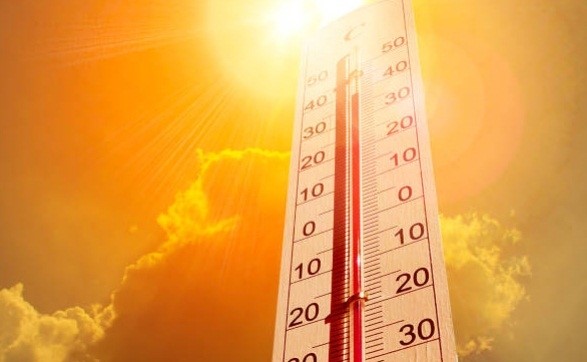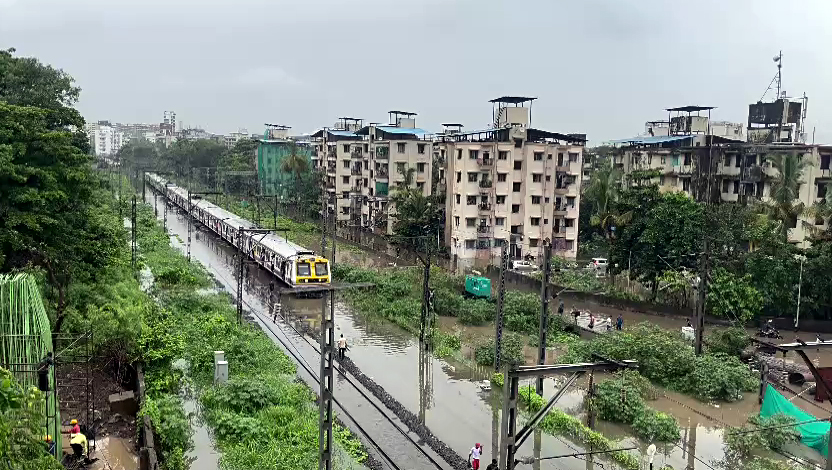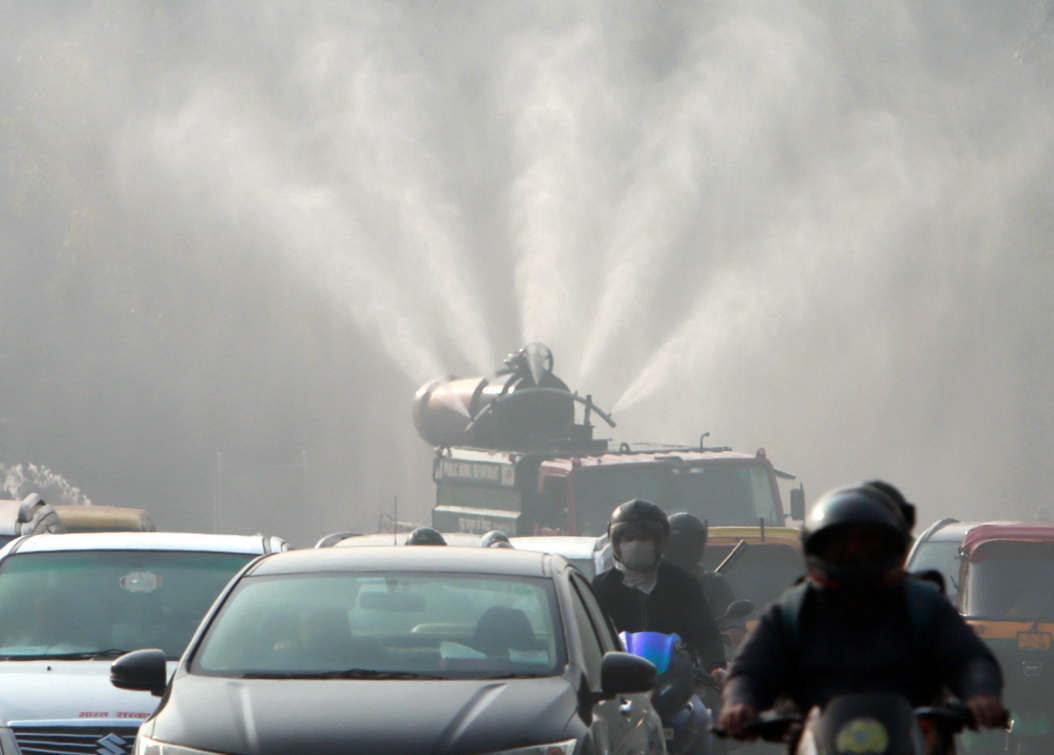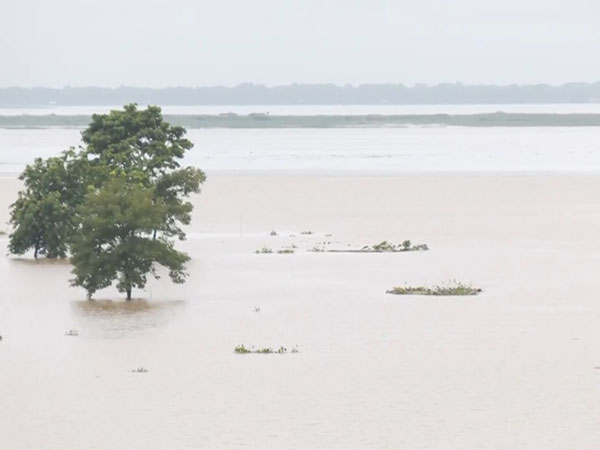Rain lashed parts of Mumbai on Saturday morning, causing waterlogging and traffic snarls in several areas. The city has been experiencing heavy rains over the past few days…reports Asian Lite News
Mumbai received heavy rainfall on the intervening night of Saturday and Sunday, leading to severe waterlogging in various parts of the city.
The Andheri Subway was affected by the intense rain, and several areas, including the vicinity of Chhatrapati Shivaji Maharaj International Airport, were inundated.
The heavy downpour also led to severe traffic jams on the Western Express Highway.
The India Meteorological Department (IMD) has issued a Nowcast warning for intense spells of rain at isolated places in the districts of Raigad and Thane for the next 3 to 4 hours on Sunday.
“Intense spells of rain are very likely to occur at isolated places in the districts of Raigad and Thane during the next 3-4 hours,” IMD Mumbai said in the early hours of Sunday.
Earlier, Mumbai’s civic authorities requested residents to avoid going out unless necessary as the IMD issued an orange alert for the city, predicting heavy to very heavy rain.
“The IMD has issued an orange alert (heavy to very heavy rain) for Mumbai. People are requested to avoid going out unless necessary,” the Brihanmumbai Municipal Corporation said in a statement on Saturday.
An orange alert was also issued for Thane, Palghar, Raigad, Ratnagiri, and Sindhudurg districts in Maharashtra’s Konkan region.
Rain lashed parts of Mumbai on Saturday morning, causing waterlogging and traffic snarls in several areas. The city has been experiencing heavy rains over the past few days.
According to the IMD, the maximum and minimum temperatures in Mumbai are expected to be around 29 and 24 degrees Celsius, respectively.
The Brihanmumbai Municipal Corporation (BMC) has forecasted heavy to very heavy rainfall in the city and suburbs at a few places today.
The possibility of extremely heavy rainfall has also been predicted in isolated places. Occasional winds at a speed of 45 to 55 km per hour are also very likely.
Further, the BMC also predicted a warning of 3.17 metres high tides at 5:22 a.m. and 3.52 metres high tides at 5: 14 p.m.
Low Tides are predicted at 2.35 metres at 10: 47 a.m. and 1.60 metres at 11:57 p.m.
Additionally, the average rainfall recorded between yesterday morning and today morning is 115.81 mm.
Meanwhile, the India Meteorological Department forecast moderate to intense spells of rain very likely to occur at isolated places in the districts of Mumbai, Sindhudurg and Ghat areas of Pune.
Previously, the Mumbai civic authority had requested the residents of the city to avoid going out and travelling unless very necessary, as the IMD had issued an orange alert for the city, predicting heavy to very heavy rainfall.
“The IMD has issued an orange alert (heavy to very heavy rain) for Mumbai today. People are requested to avoid going out unless necessary,” the Brihanmumbai Municipal Corporation (BMC) said in a statement.
An orange alert was also issued for the regions of Thane, Palghar, Raigad, Ratnagiri, and Sindhudurg districts in Maharashtra’s Konkan area.
Death toll rises to 91 in Assam floods
The flood situation in Assam has claimed 91 lives across the state, the Assam State Disaster Management Authority (ASDMA) said on Saturday.
Earlier, ASDMA said on Friday that the number of deaths in Assam floods has increased to 90. Seven more people died in the state on Friday, according to an ASDMA report.
According to the Disaster Reporting and Information Management System (DRIMS), the Brahmaputra River in Neamatighat, Tezpur, and Dhubri, the Burhi Dihing tributary in Chenimari (Khowang), the Disang River in Nanglamuraghat, and the Kushiyara River in Karimganj are flowing above danger levels.
Twenty-one districts in the state have been affected, including Cachar, Nalbari, Kamrup, Golaghat, Goalpara, Morigaon, Dibrugarh, Dhubri, Nagaon, Hailakandi, Dhemaji, Majuli, Sivasagar, South Salmara, Darrang, Karimganj, Barpeta, Kamrup (M), Biswanath, Chirang, and Jorhat.
While the flood situation in the state has been improving marginally, over 12.33 lakh people are still affected by the deluge.
A total of 2,406 villages under 75 revenue circles and 32,924.32 hectares of crop area were under water.
Dhubri district is the worst affected, with 3,18,326 people impacted, followed by 1,48,609 people in Cachar, 95,277 people in Golaghat, 88,120 people in Nagaon, 83,125 people in Goalpara, 82,494 in Majuli, 73,662 people in Dhemaji, and 63,400 people in South Salmara district.
Over 2.95 lakh people are taking shelter in 316 relief camps and distribution centres in flood-affected districts.
The ASDMA flood report also stated that 6,67,175 animals have been affected by the deluge.
Meanwhile, 180 wild animals, including 10 rhinos, have died in the flood in Kaziranga National Park so far.
Sonali Ghosh, Field Director of Kaziranga National Park, said that 10 rhinos, 150 hog deer, 2 swamp deer, and several sambar deer drowned in floodwaters, while 2 hog deer died in vehicle collisions, 13 other animals died under care, and one otter pup died from other causes.
During the floods, park authorities and the forest department rescued 135 animals, including two rhino calves and two elephant calves. Thirty-five forest camps in the national park are still under water. (ANI)
ALSO READ-Rain brings Mumbai to its knees again










